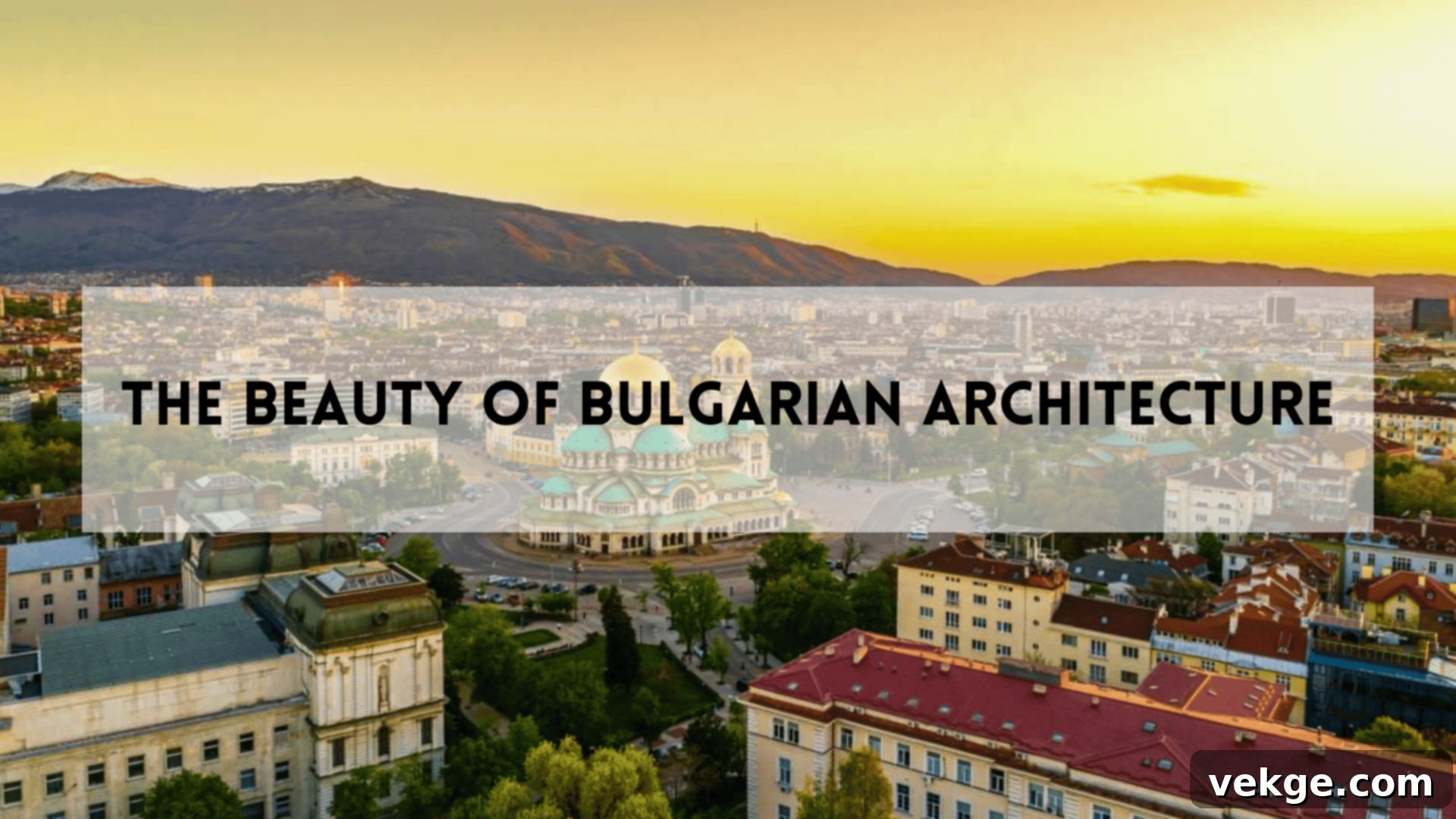Exploring Bulgarian Architecture: A Journey Through History and Design
Are you fascinated by the intricate details and rich history embedded within architectural marvels? Bulgaria offers a captivating journey through its unique buildings, which are far more than mere structures; they are profound reflections of the country’s enduring history, vibrant culture, and national spirit. From the ancient stones laid by Thracians and Romans to the majestic domes of medieval churches, the colorful facades of Revivalist homes, and the bold statements of modern designs, Bulgarian architecture tells a compelling story of resilience, tradition, and growth.
This comprehensive guide will take you on an immersive tour through the principal periods of Bulgarian architecture, including the profound medieval era, the distinctive National Revival, and the evolving modern styles. We will unveil famous landmarks that stand as testaments to the nation’s past and present, offering insights into their construction and cultural significance. Furthermore, for those inspired to bring a touch of this unique heritage into their own living spaces, we’ll explore practical ways to incorporate traditional Bulgarian design features into your home.
Whether you are a seasoned architecture enthusiast, a history buff, or simply seeking fresh and inspiring design ideas, this blog aims to deepen your appreciation for the remarkable beauty, profound history, and diverse influences that shape Bulgaria’s magnificent buildings.
The Enduring Legacy: A Historical Overview of Bulgarian Architecture
Bulgarian architecture is a dynamic tapestry woven from centuries of cultural exchange, political shifts, and artistic innovation. Its evolution is marked by several pivotal periods, each leaving an indelible imprint on the built environment and contributing to the country’s distinctive architectural identity.
The earliest influences can be traced back to the ancient Thracians and the subsequent Roman Empire. Their presence is evident in the robust use of stone and the construction of formidable fortifications, public baths, and grand temples. Significant archaeological sites like the ancient ruins of Plovdiv and the Roman theatre stand as powerful reminders of these foundational styles, showcasing engineering prowess and a sense of enduring monumentality.
During the medieval period, the powerful influence of the Byzantine Empire profoundly shaped Bulgarian Orthodox churches and monasteries. Iconic structures such as the UNESCO-listed Rila Monastery and the exquisite Boyana Church exemplify this fusion, blending characteristic Byzantine domes, intricate fresco cycles, and rich iconography with local design sensibilities. These religious buildings were not merely places of worship but centers of art, education, and national identity.
The subsequent centuries under the Ottoman Empire introduced new architectural elements, including mosques and minarets, which altered urban landscapes. Despite this foreign influence, Bulgarians steadfastly maintained their unique cultural and architectural identity. This was largely achieved through the preservation of traditional church designs and the development of distinct rural home styles that emphasized local materials and craftsmanship.
Following Bulgaria’s liberation and subsequent independence, the Bulgarian National Revival period emerged as a powerful expression of national pride and cultural resurgence. This era saw a beautiful blend of indigenous traditions with burgeoning European styles, particularly Baroque and Neoclassicism. Buildings from this time, characterized by their decorative facades, wooden balconies, and vibrant colors, celebrated a renewed sense of national identity and cultural autonomy.
The 20th century brought new ideologies and architectural movements. During the Communist era, styles such as Brutalism and Socialist Realism became prevalent, manifesting in large-scale public buildings that symbolized state power, collective strength, and a clear break from past monarchical or religious traditions. These imposing structures, often made of raw concrete, aimed to convey a sense of monumental authority.
Collectively, these diverse periods and styles have sculpted Bulgaria’s rich architectural heritage. The continuous interplay between local traditions and various foreign influences has created a remarkably diverse and compelling architectural landscape that continues to tell the story of a nation.
Key Architectural Periods in Bulgaria: A Deep Dive into Styles
This section delves deeper into the most influential historical periods that have profoundly shaped Bulgaria’s architectural landscape. Each era introduced its own distinctive style, innovative features, and cultural significance, from the early medieval constructions to the most recent contemporary buildings.
The Medieval Period and the Tarnovo Artistic School
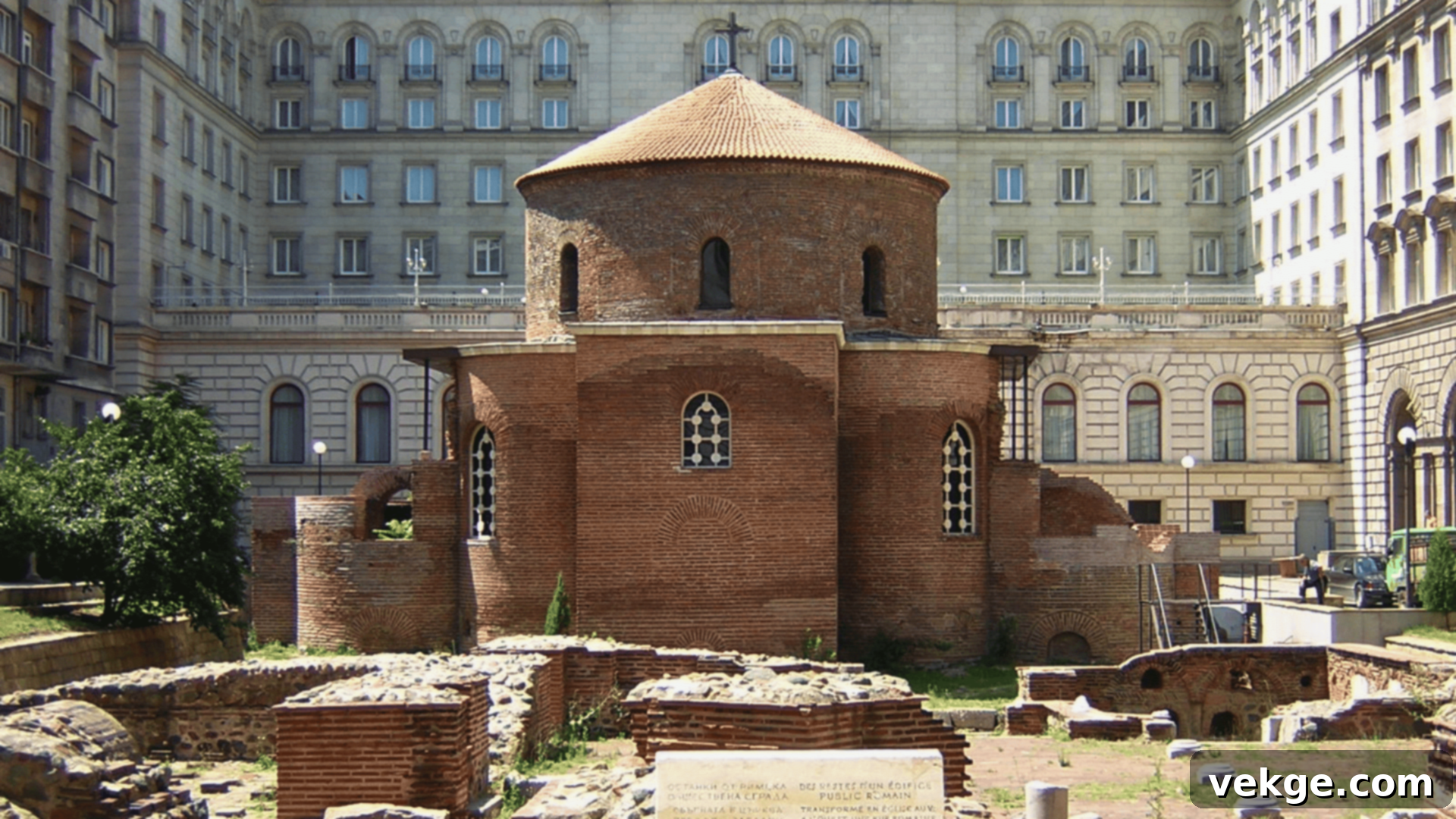
The Tarnovo Artistic School, flourishing particularly during the Second Bulgarian Empire (12th-14th centuries), was a cornerstone of Bulgaria’s medieval architectural and artistic development. This period placed a strong emphasis on the construction of churches, monasteries, and fortresses, which served as vital centers for religious life, defense, and cultural preservation.
The architecture of this time notably reflects strong Byzantine influences, evident in the characteristic use of central domes, complex brickwork patterns, and richly decorated interiors featuring intricate frescoes and detailed iconography. These buildings were meticulously designed not only to inspire spiritual awe and reverence but also to provide robust protection, embodying both divine grace and earthly power.
- Boyana Church: A distinguished UNESCO World Heritage site located near Sofia, this church is world-renowned for its exceptionally well-preserved frescoes dating from the 13th century. These murals represent some of the most complete and influential examples of medieval Eastern European painting, showcasing a remarkable blend of Byzantine and local artistic traditions, and making it an outstanding example of medieval Bulgarian architecture.
- Rotunda Church of St. George: Situated in the heart of Sofia, this ancient brick rotunda is one of Bulgaria’s oldest preserved buildings, believed to date back to the 4th century AD. It offers a fascinating glimpse into early medieval architecture with its simple yet robust design, reflecting the enduring legacy of Roman construction techniques adapted for Christian worship.
The Bulgarian National Revival (1770–1900)
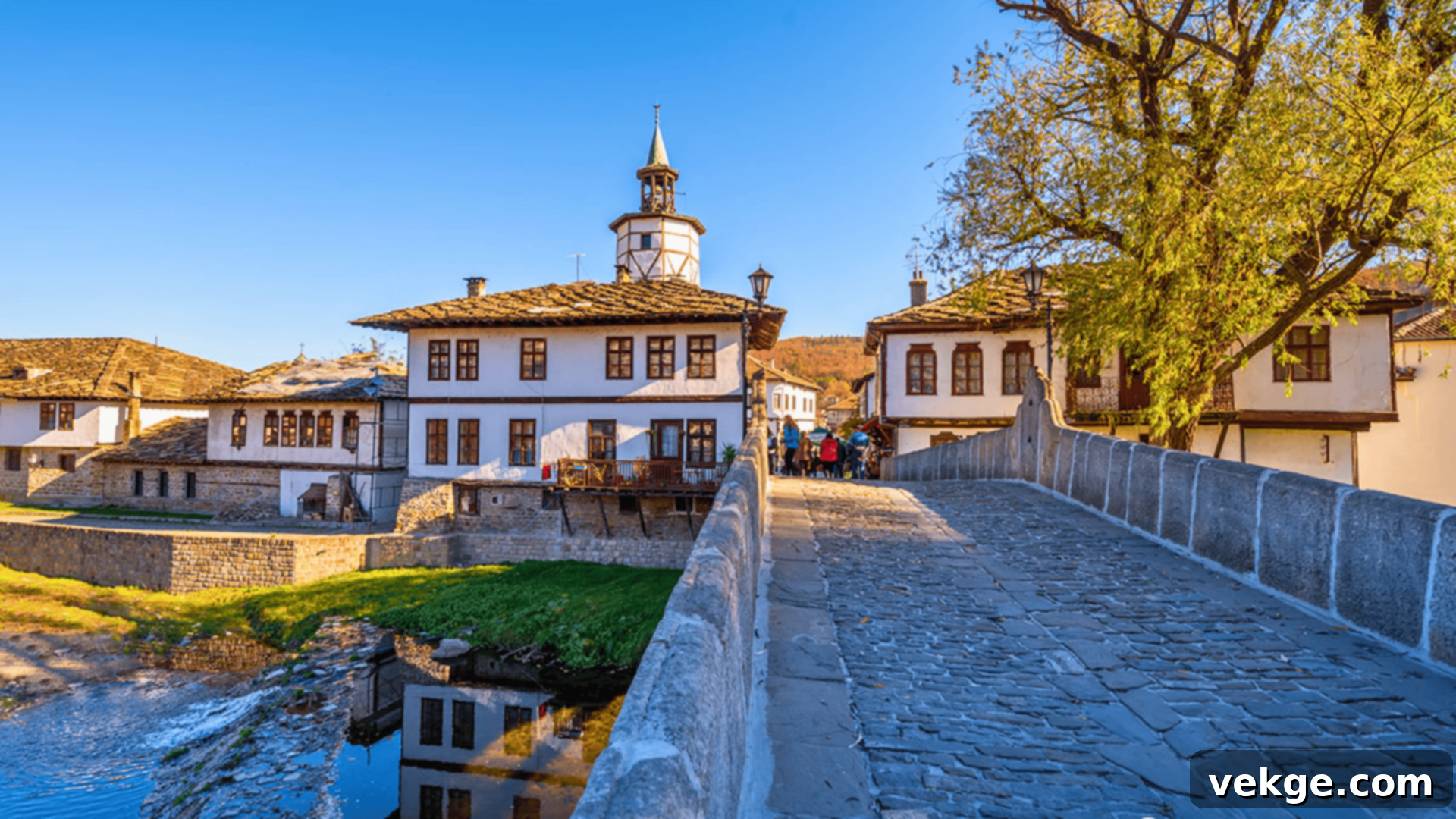
The Bulgarian National Revival period, spanning from the late 18th to the late 19th century, marked a profound cultural and political awakening that was vividly expressed through architecture. During this transformative era, there was a renewed focus on national identity, manifested through distinctive building styles that utilized prominent local materials such as stone and wood.
Buildings from this period were frequently adorned with bright colors, elaborate decorative elements, and intricate designs. This unique style ingeniously combined deep-rooted Bulgarian traditions with various European influences, including elements from Baroque and Rococo styles. Key features often included highly decorative facades, charming wooden balconies (erkeri), and expansive windows designed to maximize natural light and showcase prosperity.
The overarching goal of Revivalist architecture was not merely to create functional or aesthetically pleasing structures but, more significantly, to articulate a powerful sense of cultural pride and to subtly, yet firmly, express resistance against Ottoman rule.
- Plovdiv’s Old Town: Widely celebrated for its enchanting ensemble of colorful houses, cobblestone streets, and iconic wooden balconies, Plovdiv’s Old Town is an unparalleled living museum of Revivalist architecture. The buildings here masterfully blend practicality with exquisite beauty, featuring detailed facades, generously proportioned interiors, and an undeniable sense of cultural narrative.
Modern Bulgarian Architecture: From Socialist Realism to Contemporary Design
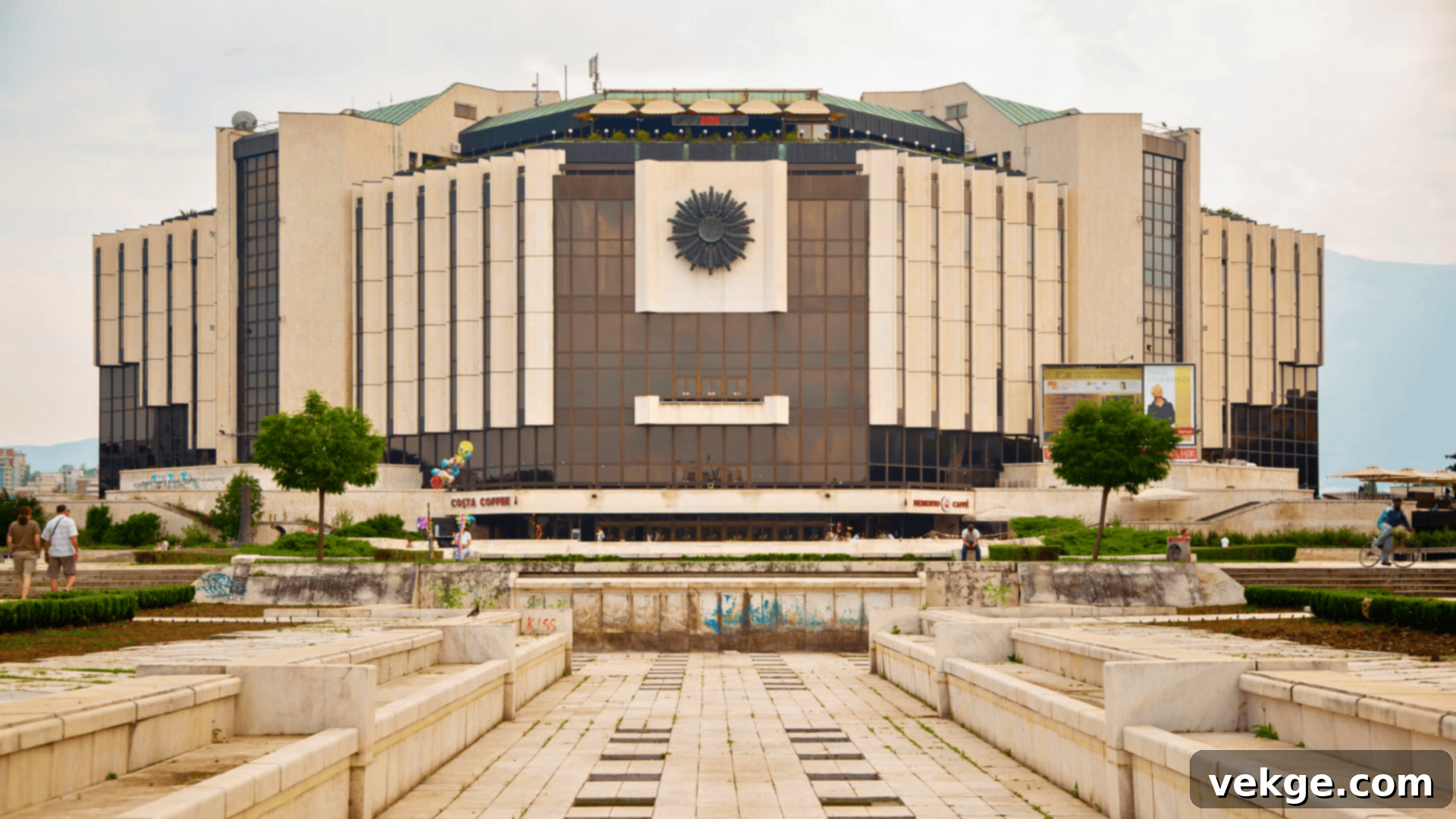
The 20th century ushered in a significant shift in architectural aesthetics and ideologies in Bulgaria, with modernist and eclectic styles gaining considerable popularity. Following World War II and particularly during the Communist era, Bulgaria saw the rise of large-scale, often monumental, structures influenced by Socialist Realism and Brutalism.
Modernist buildings from this period are characterized by their simplicity, clean lines, and the pioneering use of new materials such as reinforced concrete and steel. The focus was firmly on functionality, rational use of space, and often featured bold, geometric shapes designed to convey strength and modernity.
Eclectic architecture, conversely, embraced a blend of different styles from various historical periods, often mixing traditional elements with modern designs. This approach aimed to create unique and grand buildings that reflected Bulgaria’s evolving and increasingly complex modern identity, often symbolizing national achievements or civic power.
- National Palace of Culture (NDK): A prominent landmark in Sofia, the NDK is a prime example of modernist design, characterized by its imposing scale, bold geometric shapes, and a stark, functional aesthetic that was typical of public architecture during the late socialist period.
- Sofia Synagogue: This magnificent edifice, completed in 1909, brilliantly blends Eastern European and Moorish Revival designs. Its intricate decorative elements, grand interior, and distinctive cupola make it one of the largest and most impressive synagogues in Europe, reflecting the rich cultural diversity that has shaped Bulgarian architecture for centuries.
Unique Features of Bulgarian Architecture: Craftsmanship and Materials
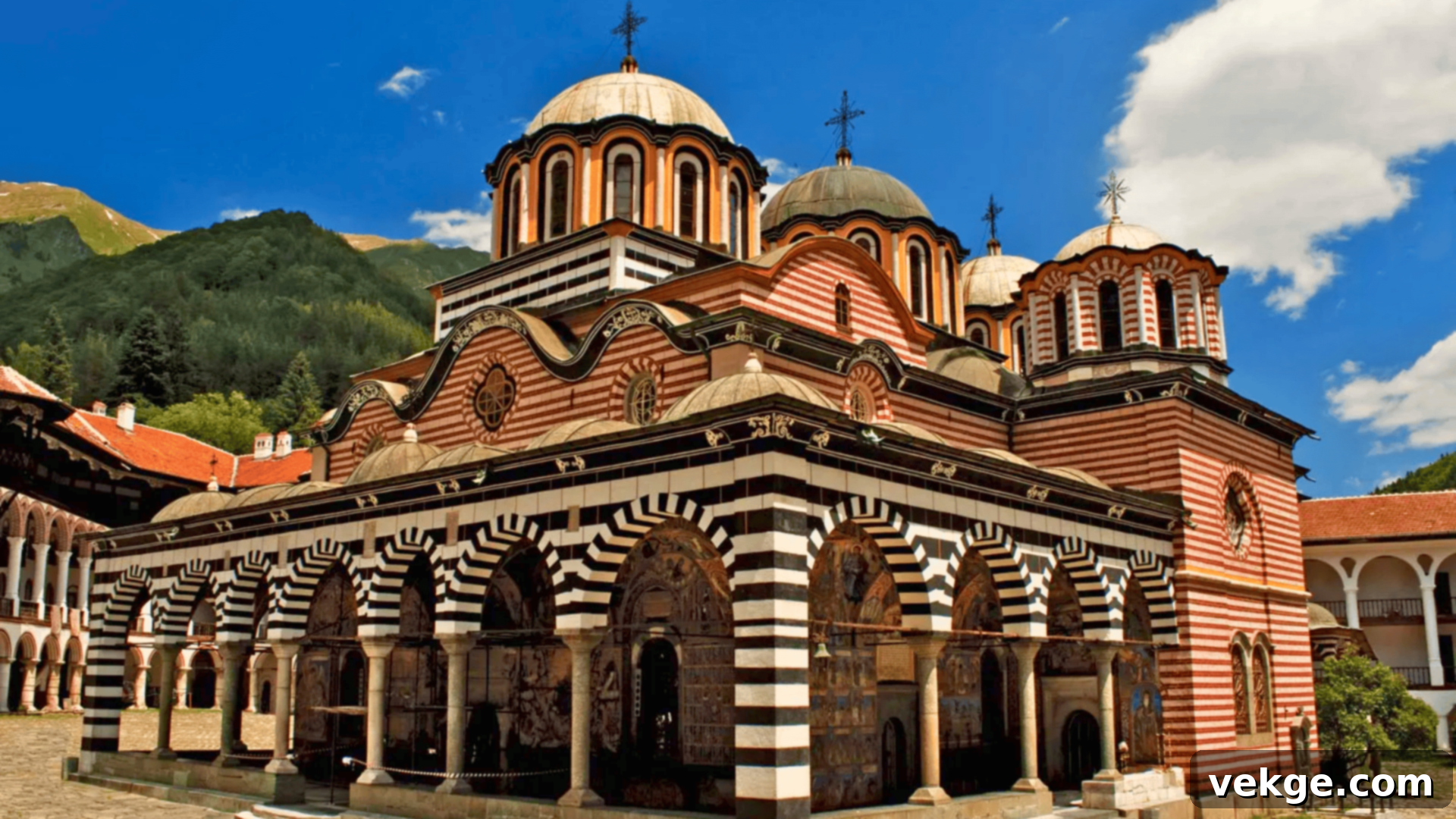
What truly sets Bulgarian architecture apart are its distinctive characteristics, which eloquently convey both aesthetic beauty and practical ingenuity. From exquisitely carved woodwork to elaborate ornate decorations and the intelligent use of readily available local materials, these features imbue Bulgarian buildings with a special charm that seamlessly blends functionality with artistic expression.
Carved Wood and Ornate Decorations: A Mark of Bulgarian Craftsmanship
The art of woodworking and the tradition of painted murals have historically held immense importance in Bulgarian architecture, reaching their zenith during the Bulgarian National Revival period. The meticulous attention to detail evident in both wood carving and fresco painting brings a profound sense of character, warmth, and individuality to traditional homes, revered churches, and secluded monasteries across the country.
- Carved Wood Panels: These exquisitely detailed wood carvings are a common and beloved feature in traditional Bulgarian homes and religious structures. The designs are remarkably varied, ranging from intricate floral motifs and geometric patterns to symbolic representations, each adding a unique touch of artistry and narrative to the building’s interior. Often found on ceilings, doors, and furniture, they transform ordinary elements into works of art.
- Painted Murals and Frescoes: Predominantly found within the sacred spaces of churches and monasteries, these vibrant painted murals depict a rich tapestry of religious themes, including compelling biblical stories, hagiographies of saints, and allegorical scenes. Beyond their artistic merit, these murals frequently served as vital educational tools, conveying religious dogma and historical narratives to the populace, and proudly showcasing the exceptional artistic talent and spiritual depth of the era.
Traditional Materials and Enduring Building Techniques
Stone and wood have consistently been the primary building materials in Bulgaria. They are chosen not only for their inherent durability and aesthetic appeal but also for their superior ability to withstand and adapt to the diverse and often challenging local climate. These materials are abundant throughout the country, making them ideal for confronting Bulgaria’s varying weather conditions, from harsh winters to warm summers.
- Stone Houses: Particularly prevalent in mountainous regions, stone houses were meticulously constructed to provide exceptional thermal insulation, effectively retaining warmth during the biting cold winters. The impressive thickness of their stone walls also offered robust protection against the elements and, historically, against potential invaders, symbolizing strength and longevity.
- Wooden Homes: In the picturesque rural areas, wooden homes were a ubiquitous sight, skillfully built using local timber resources. These charming residences often feature traditional construction techniques such as timber framing (bondruk), which allowed for flexible and structurally sound designs. They are typically designed to blend harmoniously into their natural surroundings, creating cozy, functional, and aesthetically pleasing living spaces that reflect a deep connection to nature.
These distinctive features collectively ensure that Bulgarian architecture stands out globally, masterfully blending artistic craftsmanship with the practical and sustainable use of natural materials. Whether observed in the humble yet elegant rural homes or the magnificent grandeur of its churches, Bulgarian design is consistently characterized by an unwavering focus on quality materials, intricate detailing, and a profound respect for its environmental and cultural context.
Famous Bulgarian Architectural Landmarks: Icons of History and Design
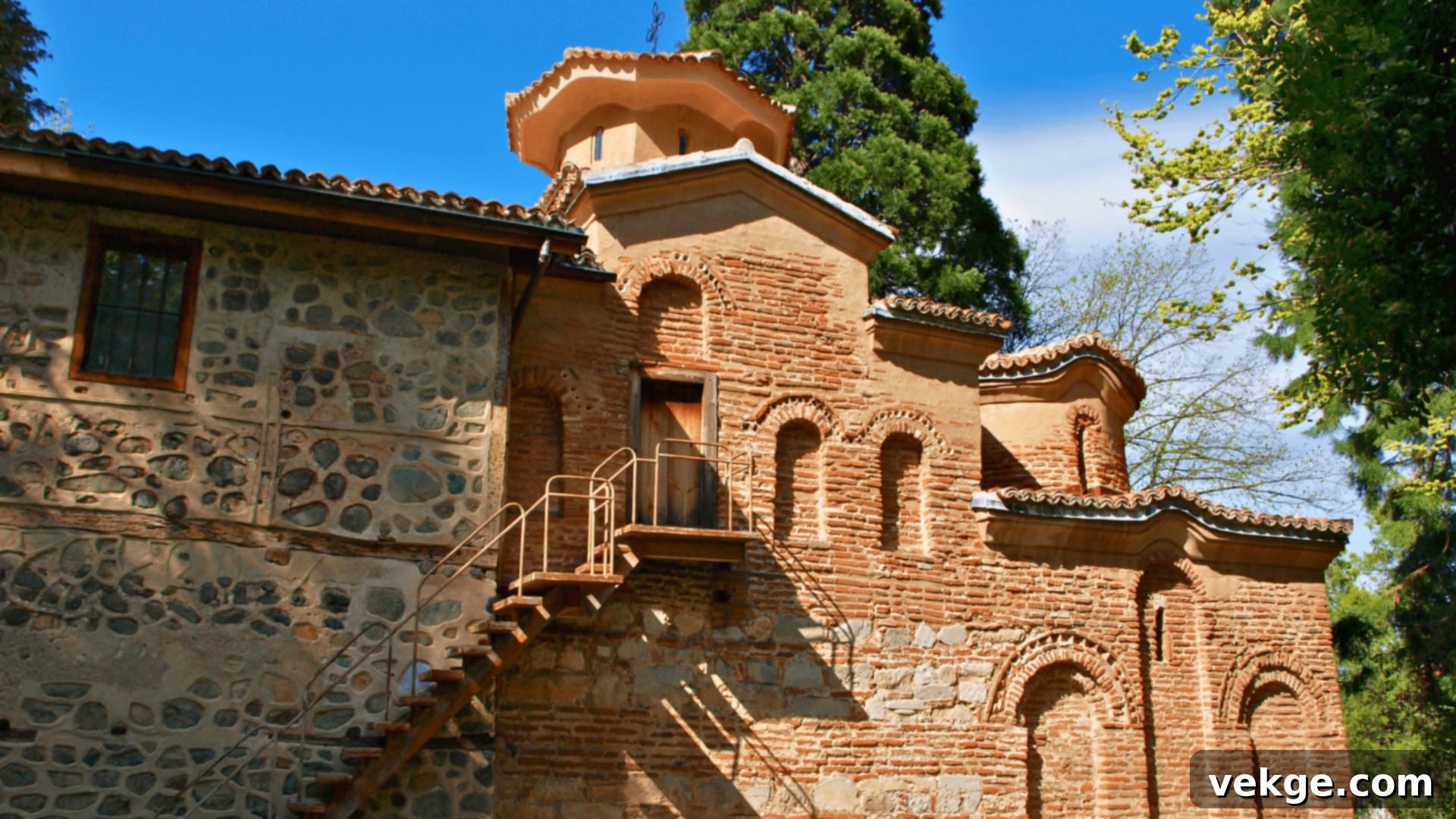
Bulgaria is home to a remarkable collection of architectural landmarks that not only exemplify its rich history but also highlight its impressive architectural achievements across various epochs. These iconic sites collectively represent the country’s profound cultural and architectural legacy, ranging from ancient fortifications and exquisite medieval churches to bold modernist and even brutalist buildings, each telling a unique part of Bulgaria’s story.
1. Boyana Church
Boyana Church, nestled at the foot of Vitosha Mountain near Sofia, is undoubtedly one of Bulgaria’s most significant historical and cultural treasures. Recognized as a UNESCO World Heritage site, it is celebrated globally for its extraordinary medieval frescoes. These breathtaking murals, dating back to the 13th century, offer an invaluable glimpse into the artistic and spiritual life of the past with their remarkably detailed and expressive depictions of biblical stories, saints, and benefactors. The church’s multi-part architecture is itself an excellent example of medieval Bulgarian style, skillfully blending Byzantine influences with local construction traditions, showcasing a profound continuity of artistic expression over centuries.
2. Tsarevets Fortress
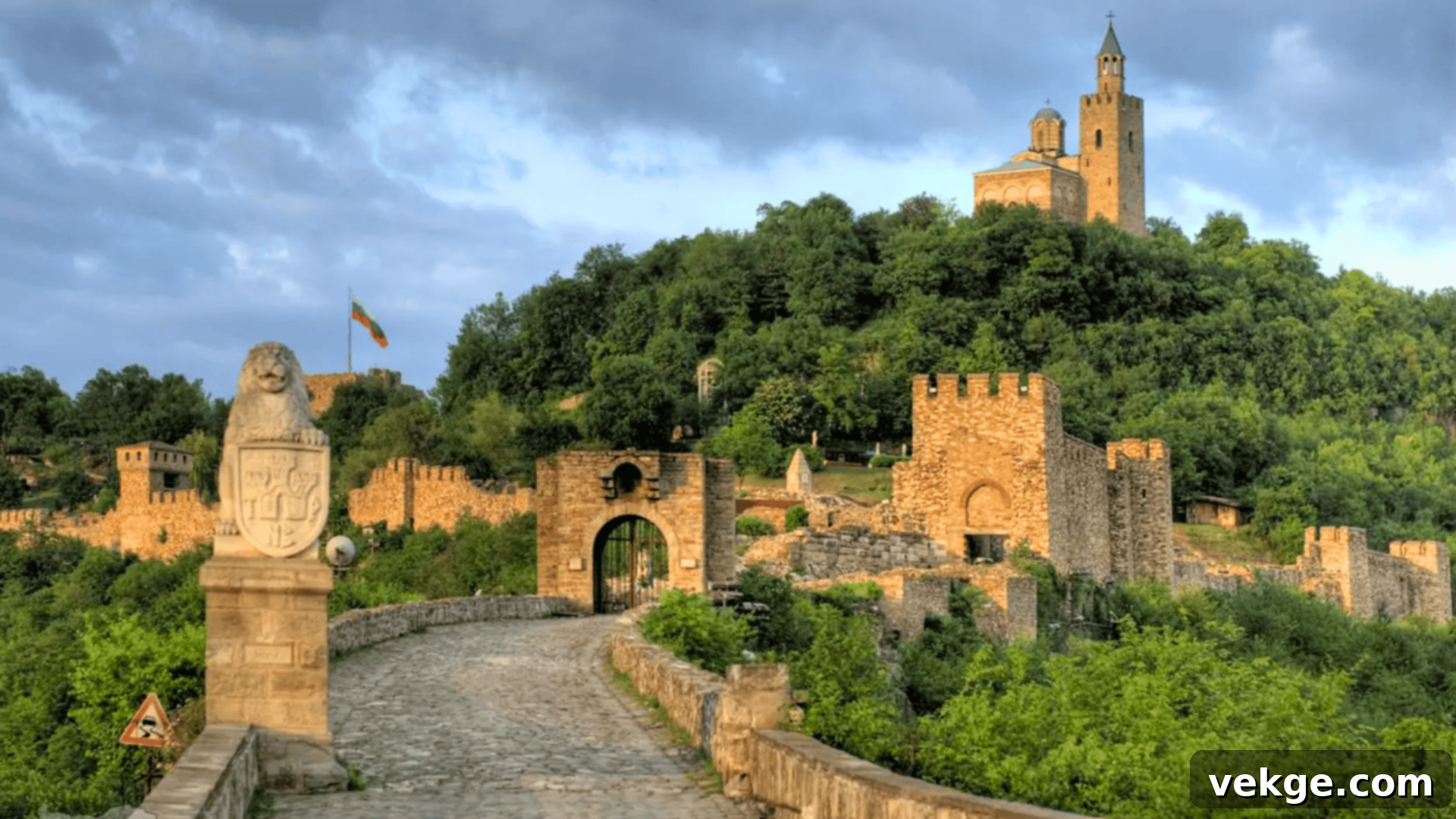
Perched majestically on a hilltop overlooking the Yantra River in Veliko Tarnovo, Tsarevets Fortress played a paramount role during the Second Bulgarian Empire (1185–1396). This formidable fortress served as Bulgaria’s political, religious, and cultural heart for centuries, housing royal palaces, a patriarchal cathedral, and numerous aristocratic residences within its extensive walls. Today, its well-preserved walls and impressive reconstructions stand as a powerful symbol of Bulgaria’s medieval power, resilience, and imperial glory, offering visitors a captivating window into the nation’s regal past and its enduring strategic importance.
3. Sofia Synagogue
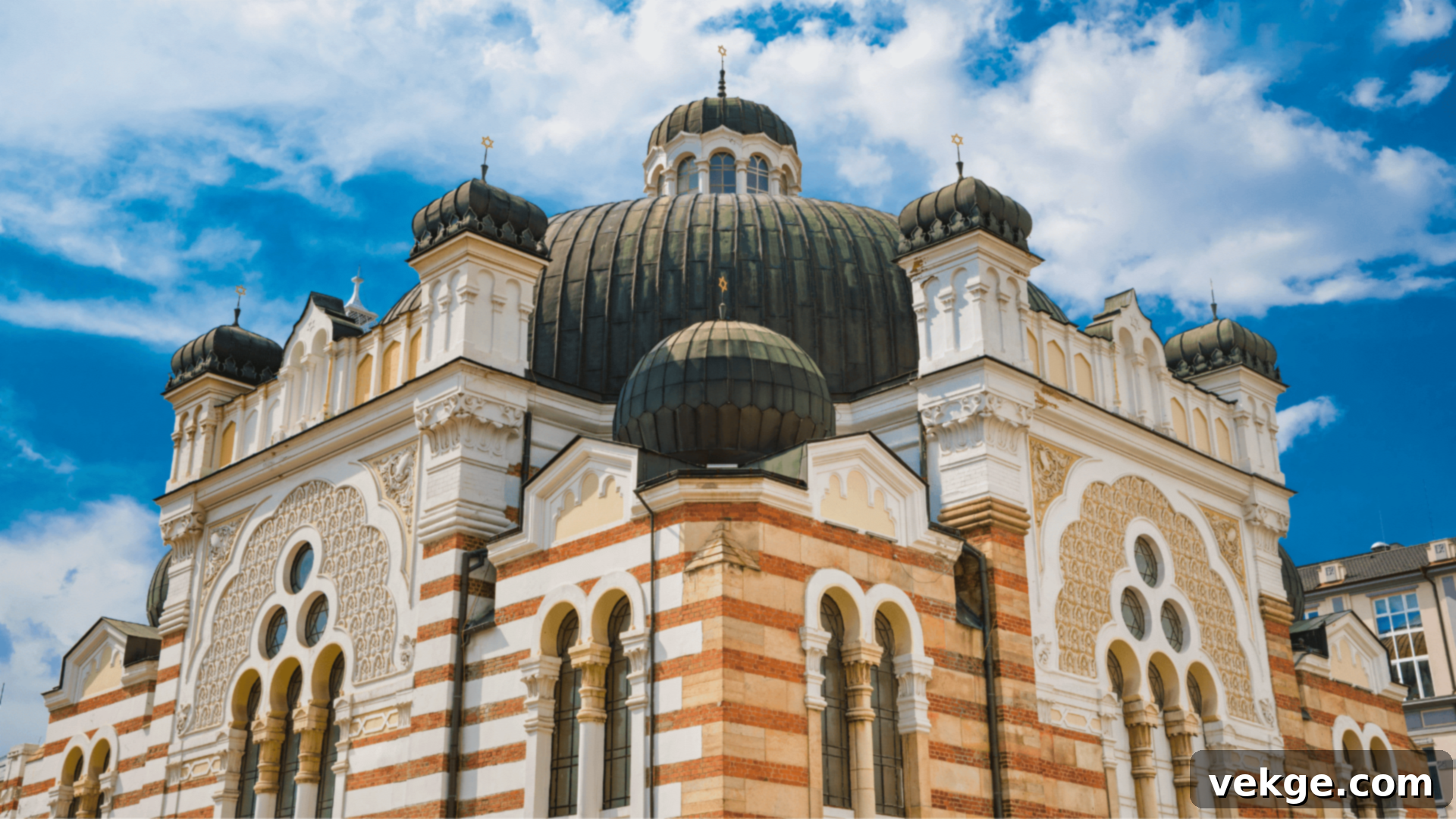
Sofia, the capital city, boasts a rich array of buildings that seamlessly blend traditional and contemporary design elements. Among these, the Sofia Synagogue stands out as a truly remarkable example of modernist and Moorish Revival architecture. Completed in 1909, its grandeur and unique aesthetic are unparalleled in the region. The building captivates with its exquisite decorative elements, particularly its stunning central dome and intricate interior, which reflect a rich tapestry of cultural influences that have significantly shaped the diverse architectural landscape of Bulgaria.
4. Council of Ministers Building in Sofia (Former Communist Party Headquarters)

The Council of Ministers Building in Sofia, originally constructed as the headquarters of the Communist Party, is a prime and imposing example of Brutalism. This architectural style, prominent during the mid-20th century, is renowned for its bold, unapologetic use of raw concrete and distinct geometric shapes. Built during the socialist era, its monumental scale and stark aesthetic were designed to reflect the period’s emphasis on state power, collective identity, and centralized control through a deliberately austere and authoritative architectural language.
These diverse landmarks collectively underscore the immense variety of Bulgaria’s architecture, showcasing everything from masterworks of medieval craftsmanship and spiritual devotion to the stark, powerful statements of modern structures. Each site provides a unique and valuable perspective on the country’s rich history, its evolving cultural identity, and the enduring artistry of its builders.
Regional Architecture Styles: Diversity Across Bulgaria
Bulgaria’s architectural landscape is characterized by its remarkable regional diversity, with each area reflecting a unique interplay of local history, distinctive culture, and environmental conditions. From the bustling, cosmopolitan capital of Sofia to the tranquil, timeless mountain villages, every corner of the country presents its own unique architectural narrative and aesthetic.
Sofia: A Blend of Grandeur and Modernity
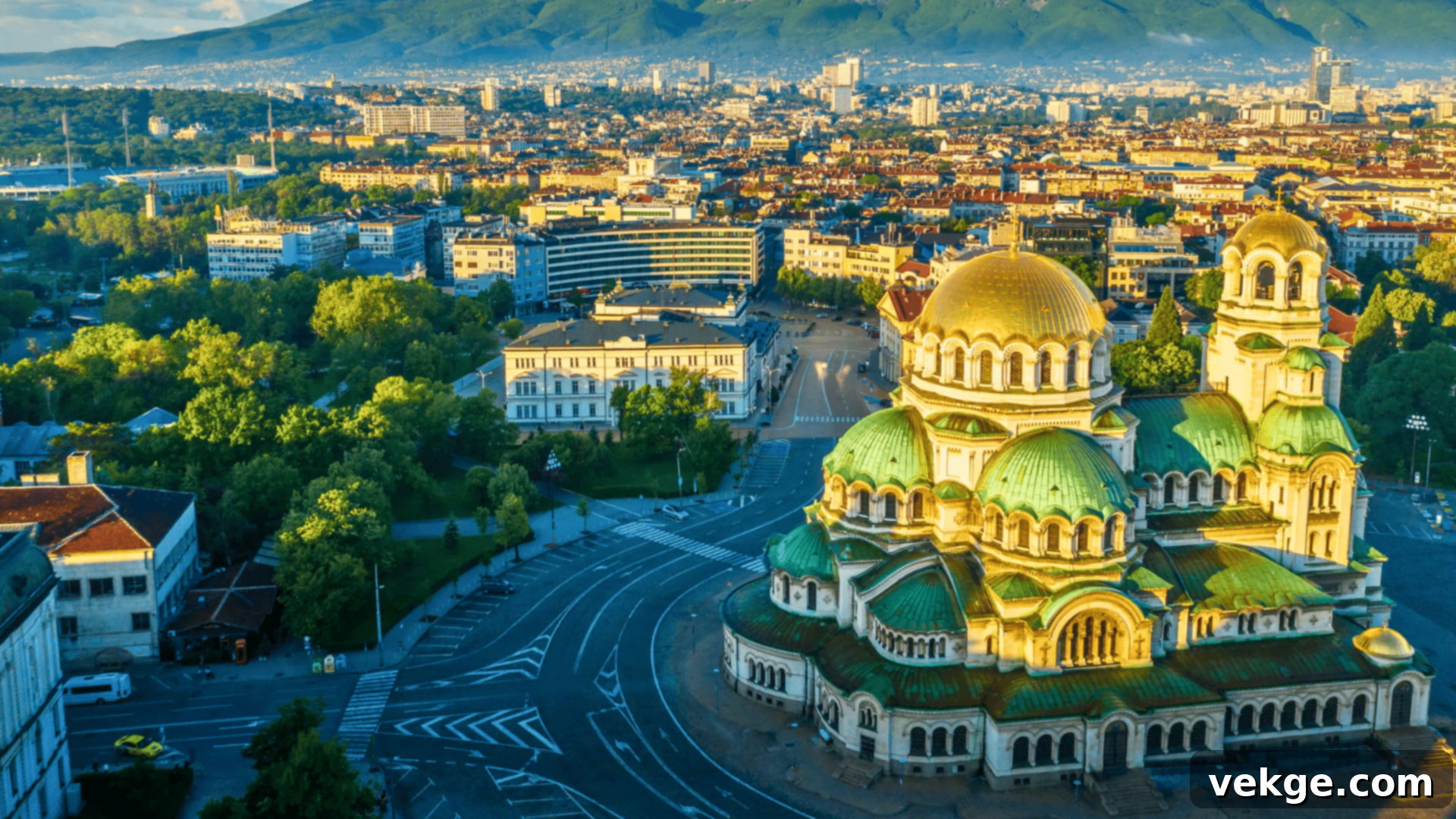
Sofia’s architecture is a fascinating amalgamation of Neoclassical and Byzantine Revival styles, creating a distinctive urban aesthetic that harmoniously combines traditional Eastern European designs with broader European influences. A quintessential example of this grandeur is the magnificent Alexander Nevsky Cathedral, an iconic landmark of the city.
The cathedral masterfully integrates elements of Byzantine architecture, such as its impressive gold-domed roofs and intricate mosaic work, with various Eastern European ornamental features. Its colossal scale and grand design eloquently represent Bulgaria’s enduring cultural and spiritual importance, making it a focal point of national identity and a testament to architectural ambition.
Plovdiv: The Charm of Bulgarian Renaissance
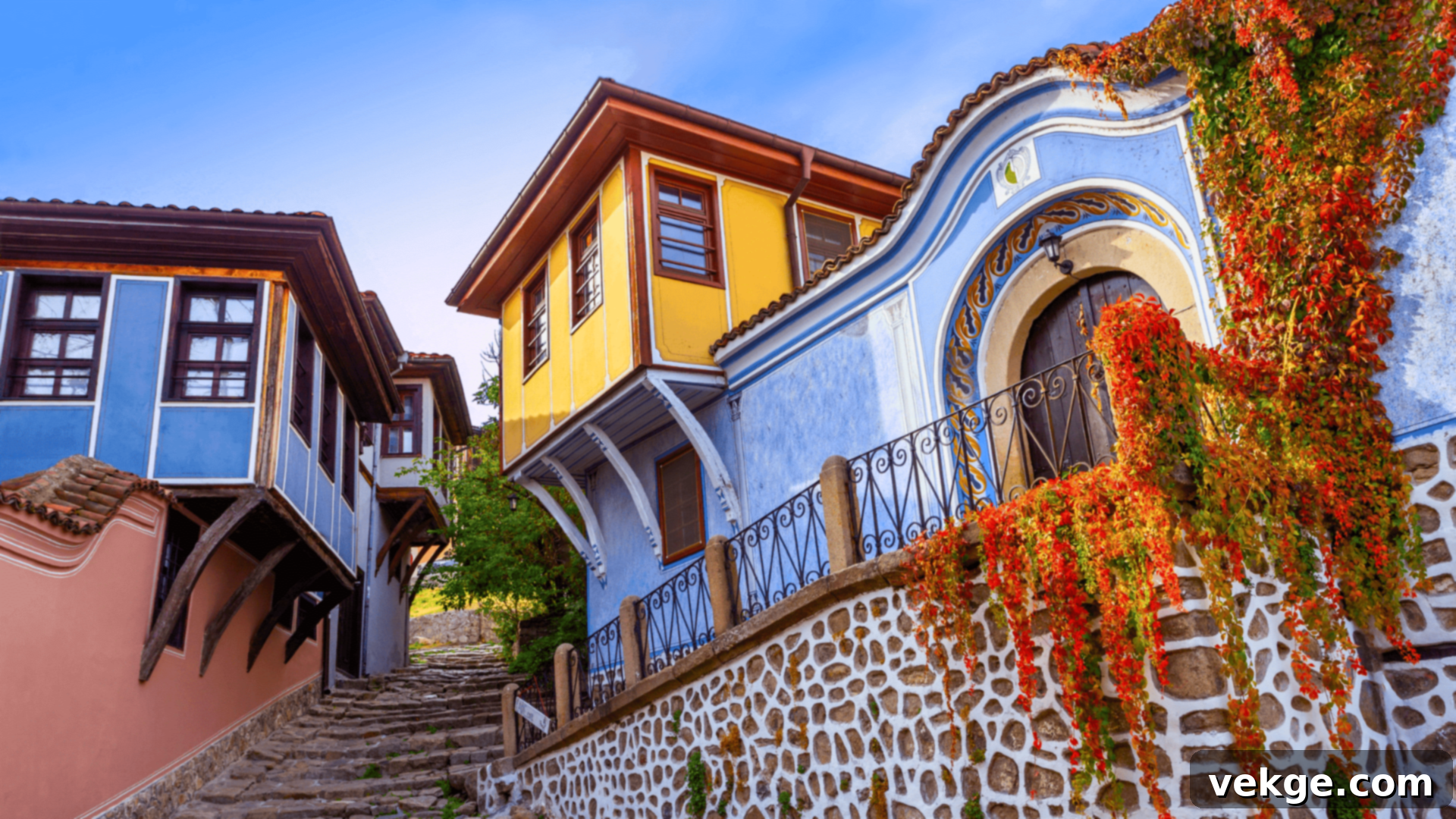
In the ancient city of Plovdiv, particularly within its enchanting Old Town, visitors are transported to the heart of Bulgarian Renaissance architecture. This unique style beautifully blends local traditions with subtle Ottoman influences, resulting in structures renowned for their characteristic wooden balconies (erkeri), vibrantly painted facades, and intricately decorative stonework. The famed Balconied Houses, with their overhanging upper floors, large windows, and detailed wooden elements, are perfect illustrations of this style. These homes were thoughtfully designed to both withstand the local climate and celebrate an aesthetic that prized beauty, comfort, and exceptional craftsmanship.
Rural Bulgarian Architecture: Simplicity and Harmony with Nature
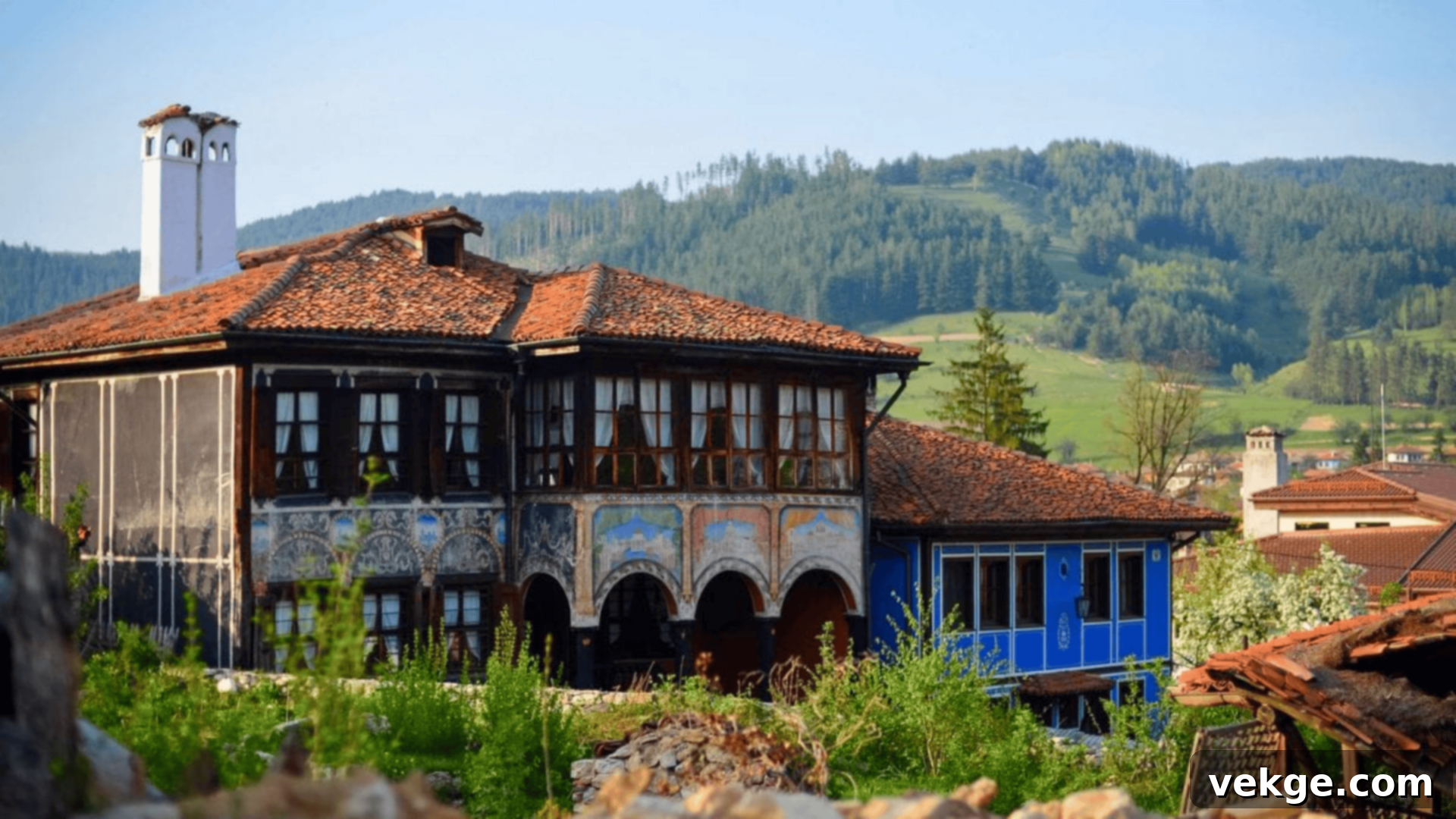
In picturesque villages such as Koprivshtitsa, known for its remarkably preserved 19th-century homes, traditional rural architecture reigns supreme. These homes are primarily constructed from natural materials like stone and wood, chosen specifically to blend seamlessly with the surrounding natural environment. The designs are typically simple, robust, and highly functional, featuring thick stone walls that provide excellent insulation, ensuring warmth during the harsh winters and a cool respite during the summer months. This architectural style profoundly reflects the close, respectful connection between the inhabitants and their natural landscape, embodying a philosophy of sustainable living.
Mountain and Village Architecture: Adapting to the Environment

In the rugged terrain of the Rhodope Mountains, homes are likewise predominantly crafted from durable stone and timber, materials specifically chosen for their superior protective qualities against the severe mountain winters. These characteristic dwellings often feature steeply sloping roofs, designed to shed heavy snowfall efficiently, and thick stone walls that offer maximum thermal mass and structural integrity. This architectural approach is a direct and intelligent response to the challenging mountain climate, prioritizing resilience and comfort.
Ultimately, each region of Bulgaria proudly showcases its own unique architectural style, a rich amalgamation that harmoniously blends local materials, time-honored traditions, and the specific environmental needs of its locale. This diversity ensures that exploring Bulgarian architecture is a continuous journey of discovery.
Bulgarian Architecture in the Modern Era: Evolution and Future Directions
The fall of the Soviet Union marked a profound turning point for Bulgarian architecture, initiating a period of significant transformation. The country embarked on a dual path: embracing contemporary global designs while simultaneously striving to preserve and integrate its rich historical architectural heritage. This delicate balance is actively shaping a dynamic new architectural style for the future.
Post-Communist Revival: Reclaiming Identity
Following Bulgaria’s hard-won independence from Soviet influence, its architectural landscape began a rapid and multifaceted evolution. This period was characterized by a vigorous effort to modernize cities and infrastructure, running parallel with a strong commitment to preserving and meticulously restoring historical buildings.
- Many urban centers initiated ambitious projects aimed at skillfully blending sleek, modern constructions with meticulously restored historical structures, ensuring that the country’s invaluable architectural past was honored and integrated into its contemporary fabric.
- This era witnessed a surge in new construction, particularly with the emergence of commercial centers like shopping malls, modern office complexes, and residential developments, all built alongside and often influenced by traditional Bulgarian architectural principles.
- The post-Communist revival saw architects and urban planners grappling with the legacy of socialist-era construction, often seeking to soften its austerity or repurpose its monumental structures for new civic functions, fostering a sense of continuity and adaptation.
Contemporary Bulgarian Architecture: Innovation and Sustainability
Today, contemporary Bulgarian architecture is characterized by an exciting fusion of innovative designs with cutting-edge ideas, especially evident in rapidly developing urban centers like Sofia. The city’s skyline is increasingly punctuated by modern skyscrapers and gleaming glass buildings, symbolizing the nation’s economic growth and its embrace of global architectural trends.
A significant focus has also emerged on green architecture and sustainable design principles. New buildings are increasingly incorporating eco-friendly materials, installing solar panels for renewable energy, and integrating various energy-saving features. This commitment to sustainability reflects a global trend and Bulgaria’s dedication to responsible development, aiming to create structures that are both aesthetically pleasing and environmentally conscious.
Architectural Trends and Future Directions: Bridging Past and Future
Bulgarian architecture is poised to continue its fascinating evolution, always with a deep-seated respect for its traditions. A growing trend is the clever integration of modern technology with traditional Bulgarian styles, resulting in buildings that are both highly functional and deeply rooted in the country’s rich cultural and historical narrative.
Bulgarian architects are increasingly drawing inspiration from global design trends, bringing fresh perspectives and innovative solutions to the country’s evolving structures. Concurrently, the rigorous protection and careful restoration of historical sites remain paramount, ensuring that Bulgaria’s irreplaceable past continues to be an integral and visible part of its vibrant future. The balance between innovation and preservation defines the exciting trajectory of Bulgarian architecture.
Bringing Bulgarian Architecture into Your Home: Design Inspirations
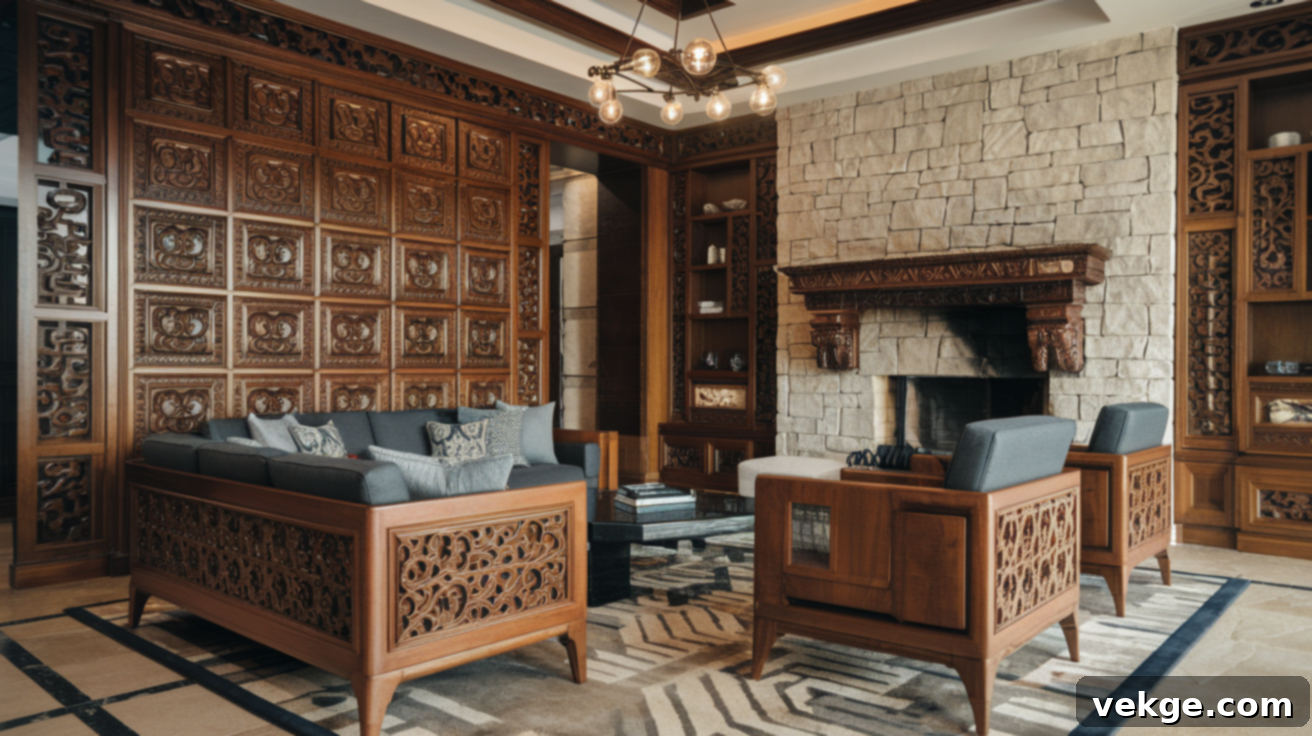
For those charmed by the distinctive aesthetics of Bulgaria, incorporating elements of its architecture into your own living space can infuse your home with unique character, warmth, and a touch of historical elegance. The Bulgarian Revival style, in particular, with its rustic warmth, intricate details, and emphasis on natural materials, is perfectly suited for adding a rich, layered personality to modern homes. Here are a few simple yet impactful ways you can integrate these beautiful features:
Embrace Carved Wood
Woodwork is central to traditional Bulgarian design, offering warmth and intricate beauty.
- Furniture: Introduce pieces of furniture featuring carved wood elements, such as dining chairs, coffee tables, or shelving units. These can serve as exquisite focal points.
- Structural Accents: Consider adding decorative wooden beams or panels to your ceilings. This creates a rustic yet refined look, reminiscent of traditional Bulgarian homes.
- Architectural Details: Incorporate wooden accents like elaborately carved doors, window frames, or even a decorative wooden partition to bring authentic Bulgarian charm into your interior.
Integrate Stone Facades and Accents
Stone is another fundamental material in Bulgarian architecture, prized for its durability and natural beauty.
- Exterior Facade: For a striking and natural look, consider adding a stone facade to a section of your house’s exterior. This creates a strong, inviting entrance and evokes the solidity of traditional mountain homes.
- Interior Stone Accents: Bring the rugged beauty of stone indoors. A stone fireplace, an accent wall in a living area, or even stone countertops in the kitchen can add a touch of the outdoors inside, creating a grounded and sophisticated feel.
- Stone Flooring: In high-traffic areas like entryways, kitchens, or even patios, durable stone floors can give your space a classic, enduring feel that is both practical and stylish, echoing historical Bulgarian pavements.
By thoughtfully incorporating these Bulgarian Revival features—from the artistry of carved wood to the timelessness of natural stone—you can infuse your modern home with a cozy, classic, and profoundly distinctive character. This approach not only enhances your living environment but also pays homage to Bulgaria’s rich and enduring architectural traditions.
Conclusion
Bulgaria’s architecture is a compelling narrative, seamlessly blending time-honored traditions with innovative contemporary designs. Each region proudly displays its unique style, from the majestic, historically layered buildings of Sofia to the charming, rustic homes nestled in the countryside and mountains. This exploration has offered a glimpse into these diverse architectural styles and highlighted how they vividly reflect Bulgaria’s intricate history, vibrant culture, and resilient spirit.
From the awe-inspiring Byzantine Revival churches and monasteries to the picturesque, brightly painted houses of the National Revival period, and the robust, practical stone dwellings in rural areas, there is an immense richness and variety to appreciate. We hope you’ve been inspired by the depth and beauty of this architectural heritage. Moreover, the timeless appeal of elements like carved wood and natural stone means you can easily bring a piece of this Bulgarian charm into your own home, creating spaces that resonate with history and warmth.
If you have enjoyed this journey through the architectural wonders of Bulgaria, we encourage you to explore our other blog posts for more fascinating insights and creative ideas on global architecture, interior design, and cultural heritage. Your next design inspiration might be just a click away!
